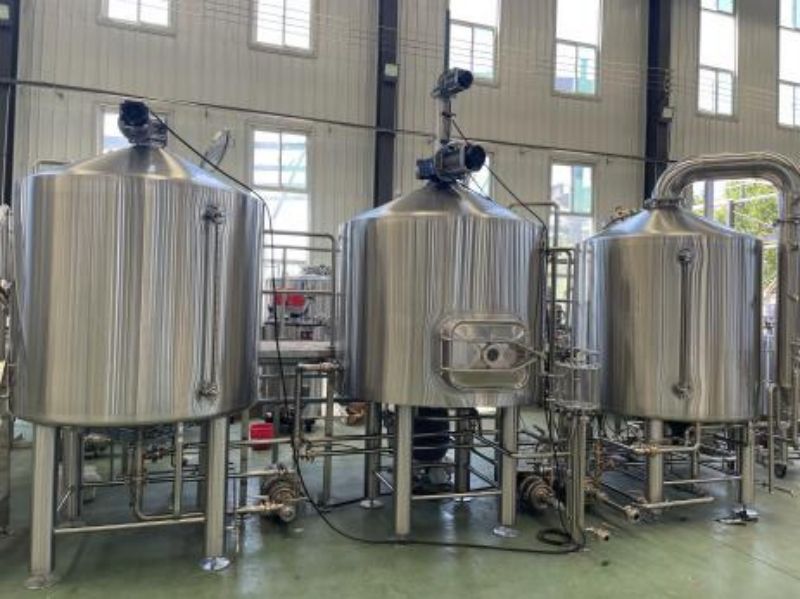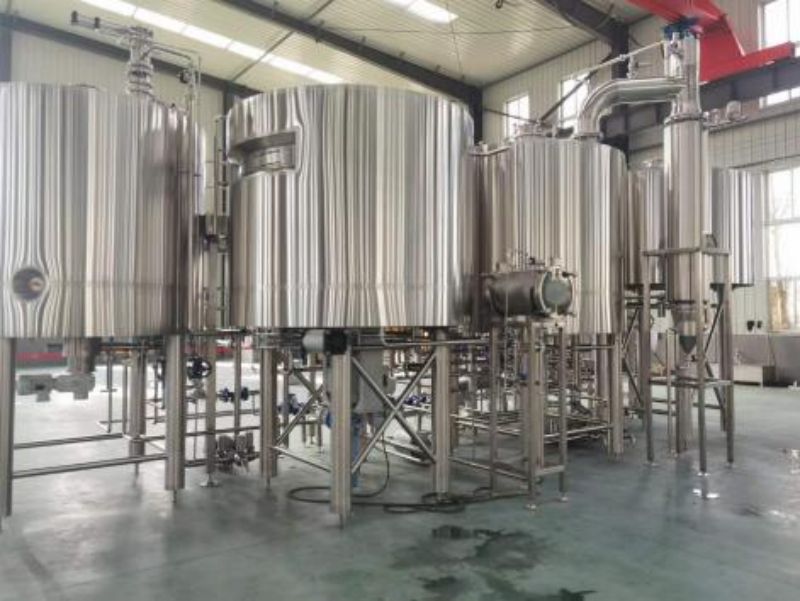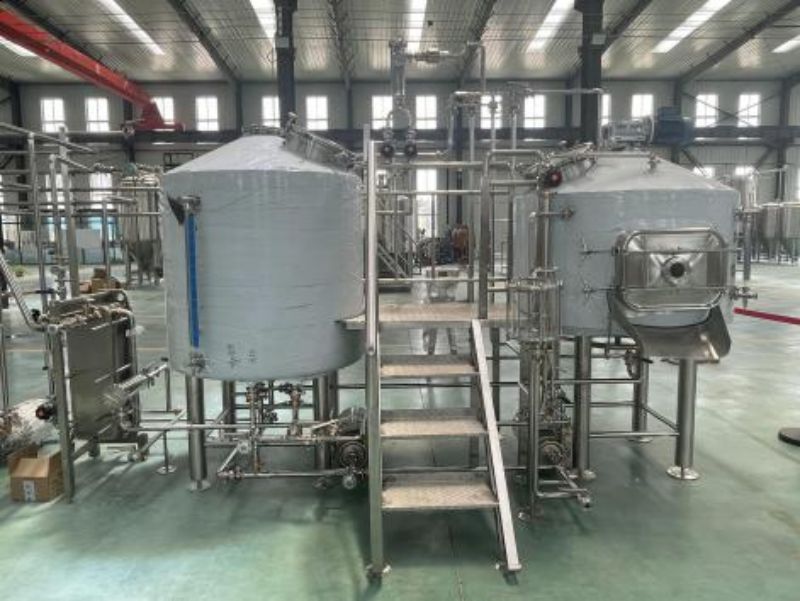Functions of a 15 bbl brewing system
The 15 bbl brewing system, a staple in many mid-sized breweries, has been designed with precision to execute the brewing process seamlessly. The functions it performs are integral to producing consistent, high-quality beer.
Mashing
At the heart of the brewing process is mashing. Here, the crushed grains are soaked in hot water, allowing enzymes to break down the starches into fermentable sugars. The temperature and duration of this process can significantly influence the beer’s flavor profile, body, and color.
Boiling
Post mashing, the liquid, now called wort, is transferred to the boil kettle. Here it is boiled, usually for an hour, with hops added at various stages. Boiling serves multiple purposes: it sterilizes the wort, extracts flavors and bitterness from the hops, and evaporates unwanted volatile compounds.
Cooling
After boiling, it’s crucial to cool the wort quickly to a temperature suitable for yeast fermentation. Rapid cooling prevents unwanted bacterial growth and helps in the formation of cold break, which improves beer clarity.
Fermentation
The cooled wort is transferred to fermentation tanks where yeast is added. Over the next several days to weeks, the yeast consumes the sugars, producing alcohol and carbon dioxide. This is where the magic happens, as different yeast strains impart various flavors and aromas to the beer.
Maturation
Once primary fermentation is complete, the beer is allowed to mature. This process lets flavors meld and any unwanted compounds to settle or be metabolized by the yeast. Depending on the beer type, maturation can last anywhere from a few days to several months.
Packaging
The final function of the system is to prepare the beer for distribution. This might involve transferring the beer to bright tanks for final clarification and carbonation, followed by packaging in kegs, bottles, or cans.
Through each of these steps, the 15 bbl brewing system ensures consistency, precision, and efficiency, all vital for producing top-tier beers.


How to Choose a 15 bbl Brewing System?
Choosing the right brewing system can be the difference between a successful brewery and one that struggles to produce consistent, high-quality beer. When considering a 15 bbl brewing system, several factors should be taken into account to ensure the investment proves fruitful.
Understand Your Brewing Goals
Before diving into the specifics of the brewing system, it’s essential to understand your brewing goals. Are you focusing on a specific type of beer, or are you planning on experimenting with various styles? The answer will influence the kind of system features and capabilities you should prioritize.
Capacity Consideration
While the capacity of 15 bbl is given, there’s more to consider. Think about your expected production levels, potential for growth, and how often you intend to brew. Some systems are designed for continuous, back-to-back brewing, while others may require longer downtimes between batches.
Automation Levels
15 bbl brewing systems come with various degrees of automation, from manual to semi-automated to fully automated. While automated systems can simplify the brewing process and ensure consistency, they also come with a higher price tag. On the other hand, manual systems might be more labor-intensive but can offer a hands-on brewing experience.
Material and Build Quality
The brewing system’s build quality and material can significantly influence its longevity and the quality of beer produced. Systems made of high-quality stainless steel are generally preferred due to their durability, resistance to corrosion, and ease of cleaning.
Supplier Reputation
It’s crucial to buy from a reputable supplier or manufacturer. Research customer reviews, ask for references, and perhaps visit other breweries using the same system. A reputable supplier will not only provide a quality system but also offer post-purchase support and maintenance services.
Cost and Financing
Lastly, consider the overall cost and financing options available. While a cheaper system might seem attractive, it’s essential to consider its long-term reliability and efficiency. Some suppliers might also offer financing options, lease-to-own plans, or other payment structures that could benefit your financial situation.
Post time: Nov-20-2023



